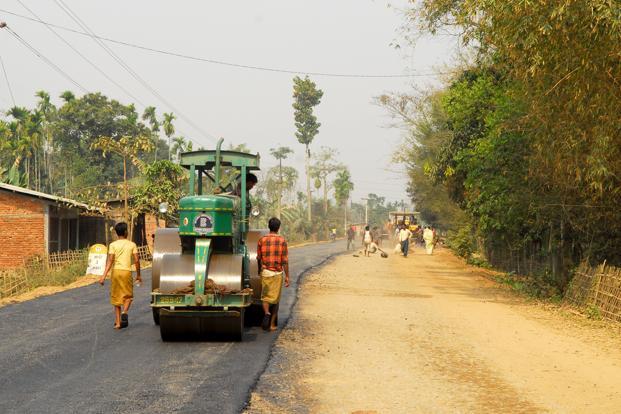First in a series by Beatrice Halbach (LBJ MPAff Student) covering her internship at the Organization for Economic Cooperation and Development (OECD).
In the past several decades a number of countries developed extremely rapidly, completing processes of industrialization, urbanization, and social transformation in 20 or 30 years. Comparable change took centuries in today’s developed countries. China is the most vivid example of this phenomenon: since the start of economic reforms after the death of Mao Zedong in 1976, China has transformed from a mostly poor, rural country into an industrialized upper middle-income country with the 2nd largest economy in the world. At the same time, China has achieved remarkable progress on a range of social welfare indicators: vast reductions in poverty, broad improvements in literacy and school enrollment rates, life expectancy, mortality rates, and access to basic public services. Of course, China’s development process has not been without fault. Today, it faces major ecological problems in terms of pollution, natural resource degradation, and water scarcity as a result of its rapid industrialization. At the same time, development has not benefited everyone evenly. There are severe disparities in income, welfare and access to public services between China’s rural and urban areas and between its coastal and inland provinces.
China and the “Asian Tigers” of Hong Kong, Singapore, South Korea and Taiwan followed a vastly different development path from that of western countries. They learned from the development experiences of western countries—particularly through shared learning and technology—while also developing in an increasingly globalized world that presents both new challenges and opportunities.
An increasingly open and interconnected world means that industrialization is much more difficult, since markets in developing countries face competition from both developed countries as well as China. Some countries, particularly in sub-Saharan Africa, face new demographic challenges associated with high fertility rates, including difficulty feeding their populations and alack of productive jobs for working-age people. Developing countries also deal with environmental challenges: not only do they face natural resource degradation and water scarcity, developing countries are also more vulnerable to the hazards of climate change, including droughts, flooding, and other extreme weather effects. This challenge is compounded by the fact that the agricultural sector still plays a dominant role in these countries’ economies, accounting for a majority of the population’s livelihoods. At the same time, new technologies provide opportunities to create innovative solutions to tackle these problems.
Given the new global context, the development experiences of countries that emerged in the last several decades are particularly relevant for today’s developing countries. At my Rural Development internship with the OECD Development Center this summer, I am working with a team to craft a new rural development framework for developing countries that both draws on lessons from emerging countries and that addresses the challenges of the 21st Century (OECD Development Centre, 2015). Given that almost half of the world’s population still lives in rural areas, and that poverty is highly concentrated in these areas, a new development approach merits a targeted focus on rural areas (FAO). This forward-looking project will be key to helping today’s developing countries engender the structural transformations needed for them to successfully modernize. At the same time, the new framework provides a means to address most, if not all of the challenges outlined in the new Sustainable Development Goals, which are to replace the Millennium Development Goals at the end of this year.
Reference:
(Unpublished Working Paper) OECD Development Centre (2015). Toward a New Rural Development Paradigm for Developing Countries: Lessons and Implications from Korea’s Saemaul Undong and Developing Country Case Studies. Paper prepared for the Korean Ministry of Foreign Affairs/OECD Development Centre Workshop: Development Strategies for Action: Lessons from Saemaul Undong and Developing Countries for the 21st Century. June 26th, 2015. Paris, France.

